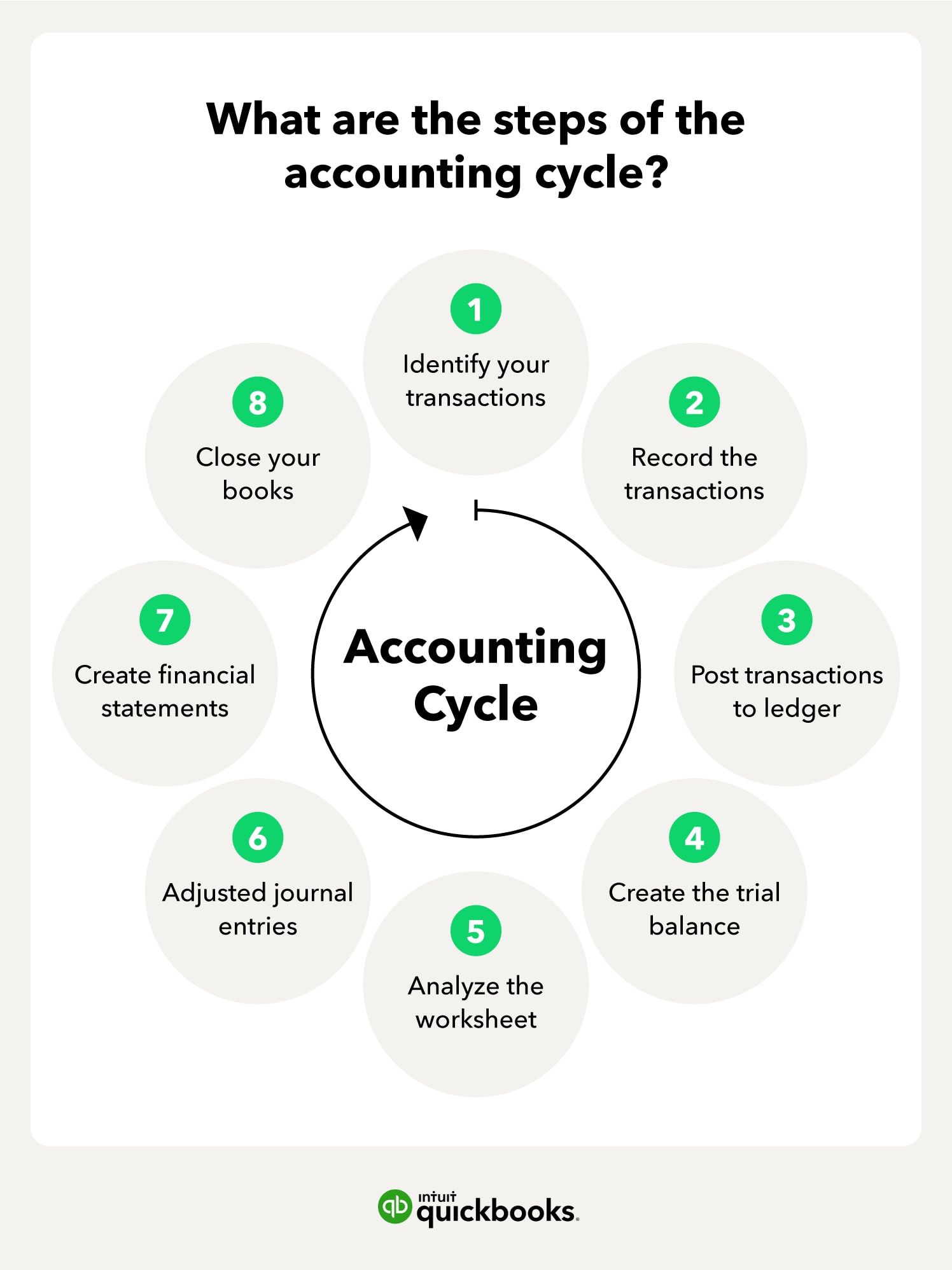According to the Corporate Finance Institute, the Accounting Cycle is “the holistic process of recording and processing all financial transactions of a company, from when the transaction occurs, to its representation on the financial statements, to closing the accounts.” In this article, I will describe the 8 steps of the accounting cycle and each of its functions towards the overall idea of accounting.
The 8 Steps of the Accounting Cycle
Step 1: Identify the Transactions
Numerous companies have many transactions throughout the process of the accounting cycle, which need to be identified and kept in their books. For all transactions, recordkeeping is essential, as not only does it provide a place for companies to record sales but also expenses. According to the Corporate Financial Institute team, transactions can “ include a debt payoff, any purchases or acquisition of assets, sales revenue, or any expenses incurred.”
Step 2: Use a Journal to Record the Transactions
After identifying these transactions mentioned above, an accountant must chronologically record these into a journal. It is important that when using debits or credits with more than one account, they must balance. However, there is also the concept of cash accounting, which requires transactions to be added into the journal when cash is either paid or received.
Step 3: Posting
After a transaction is recorded in a journal, its account should be posted to a general ledger, or GL, to provide a rundown of the accountant’s activities. This also facilitates the work of the bookkeeper, who can keep track of financial positions and status through the accounts. According to Investopedia, “one of the most commonly referenced accounts in the general ledger is the cash account which details how much cash is available.” However, now since most accounting is electronic, GL’s are not of much necessity as they used to be, as transactions are automatically posted and logged.
Step 4: Trial Balance
After the accounting period is ended, a trial balance is formed and implemented in order to inform a company of its unadjusted balances in each account. This step ensures the validity of the previous step, as it makes sure credit and debit numbers are equal, and can also highlight numerous mistakes when the numbers are uneven.
Step 5: Worksheet
A worksheet is created next to finalize the equality between the credits and debits, so that in case of any discrepancies or disparities, last-minute adjustments can be established. Additionally, if someone is into accrual accounting, worksheets are important so that revenues and expenses can match.
Step 6: The Adjustment of Journal Entries
In this step, bookkeepers are required to simply adjust journal entries when necessary, so that there are not any discrepancies when entering the later steps. These entries also are posted into accounts for accruals and deferrals.
Step 7: Financial Statements
After a company adjusts its entries, it starts to produce financial statements, which can include an income statement, cash flow statement, and a balance sheet, which can be prepared by using the adjusted balances.
Step 8: Closing the Books
The end of the accounting cycle occurs when a company closes its books at the end of a day on a specified date, which is meant to analyze the overall period’s general financial performance. However, after the closing period, the accounting cycle restarts but according to an article from Investopedia, companies during this time fill out “paperwork, plan for the next reporting period, and review a calendar of future events and tasks.” Overall, the accounting cycle is like the everlasting sunlight that cultivates the seeds of an accounting company into the trees of success by providing it the nutrients of systematic financial planning.


Leave a Reply